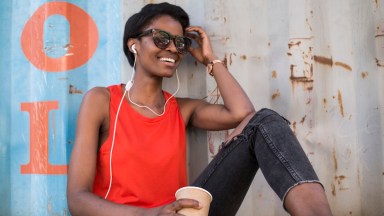Today’s world has never been more connected. And the advent of social media has served as the catalyst to this, connecting people far and wide across multiple platforms and throughout a myriad of interests. While consumers—friends, family, fans or loved ones—have used social media to share content with each other, the television industry has a unique opportunity to organically reach its own audiences through platforms like Twitter, Facebook and Instagram as well. In fact, it’s routine (and occasionally lucrative) these days for talent and accounts associated with TV programming to deploy content of their own—whether it be posts, pictures, or videos—to connect with TV audiences as a vital piece to achieving their overall marketing strategy.
But with social media serving as a seemingly content free-for-all, how do networks and their influencers stand out among the masses?
Measuring and understanding their own owned content provides useful insights to help better connect them to their TV audience.
What does this ecosystem look like?
To gain a better understanding about how social media posts generated by TV-affiliated accounts are being created and consumed, Nielsen’s Social Content Ratings® looked at over 142,000 pieces of content during a three week period just ahead of the fall TV season. These pieces of TV-related content generated more than 154 million engagements, likes, comments, re-posts, etc., across Twitter, Facebook and Instagram.
Content creators also have different approaches for content generation and social engagement across different platforms. Owned accounts post substantial amounts of content on all platforms in order to reach the broadest and most diverse audience. But despite the platform on which a piece of content is generated, the form of the content holds weight as well. While text-only posts are the most common media type created by owned accounts across Facebook, Instagram and Twitter, representing 35% of all owned content, they only account for 8% of all owned engagement. On the other hand, video and static images comprise about 56% of owned content, but they perform at a higher level, accounting for 83% of all owned engagements.
However, consumer engagement with the same content types is not uniform across different social platforms. Even though videos and images garner the bulk of social engagements, not every individual video or image post is automatically the most engaging. On an individual post level, the average image post gets nearly 2,000 engagements across platforms, but video posts get slightly less, at just under 1,300.
This reflects why content creators must be able to curate posts that harness the distinct benefits of each platform. Video posts on Facebook and Twitter are more than 10% and 20% more engaging than images, respectively, but it’s reversed on Instagram; image posts on Instagram overtake video posts by more than 30% in terms of engagements.
The world of social media is expansive, diverse and nuanced. Networks and talent can harness its power by understanding the dynamics of owned content to better craft their content strategies. Whether the goal is to create as much content as possible or generate the most likes and comments, each social platform and media type have their own unique value to contributing to this. The old adage of “content is king” holds true in the social realm—when intertwined with the TV universe, the avenues for program promotion and connecting with audiences are boundless.
Methodology
The insights in this article were derived from Nielsen Social Content Ratings for the period of Aug. 1, 2018 – Aug. 19, 2018. The analysis covered all networks, programs and episodes. Engagements are a measure of relevant owned U.S. social media activity grossed across Facebook, Instagram and Twitter from three hours before through three hours after broadcast, local time. Owned activity for Facebook includes comments, shares, and likes; for Instagram includes comments and likes; and for Twitter includes retweets, replies, quotes, and likes.



